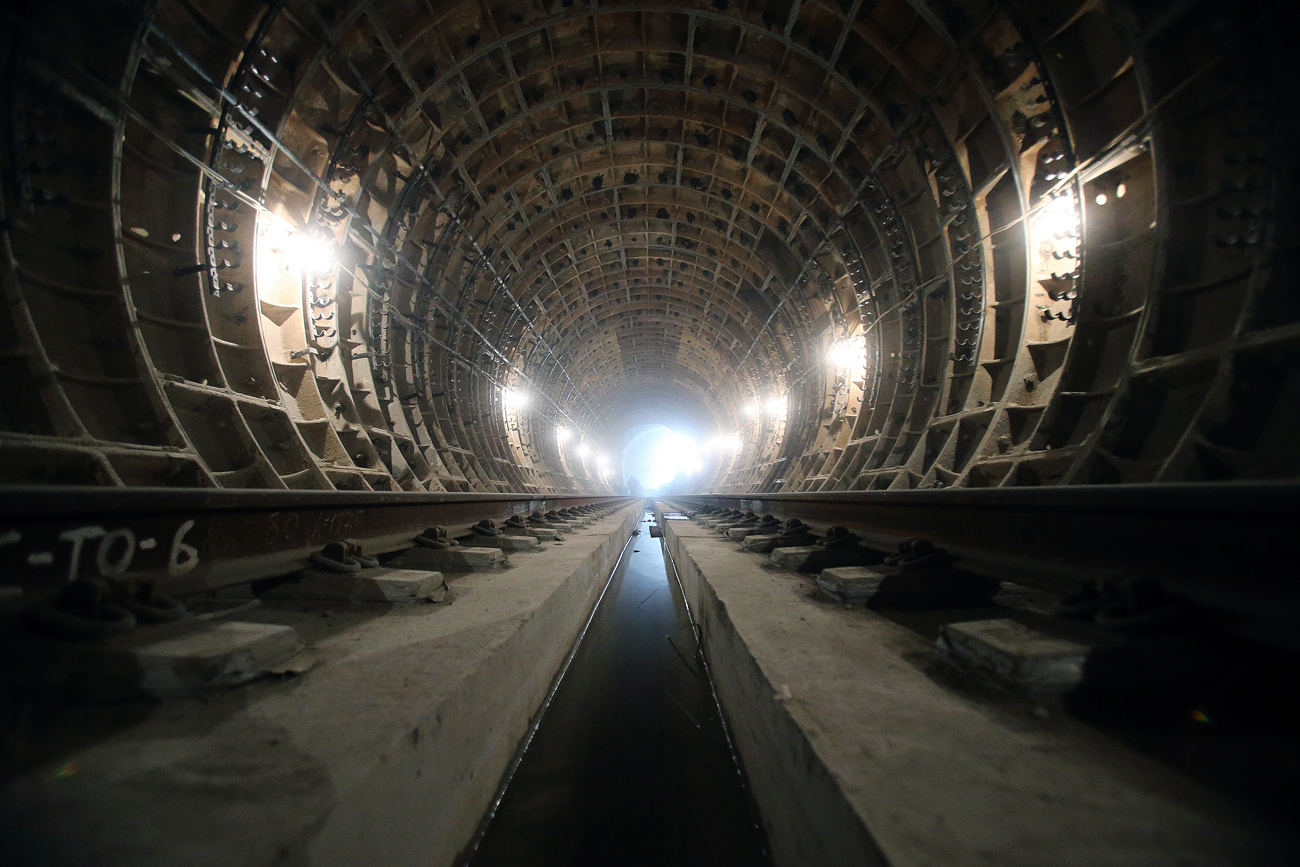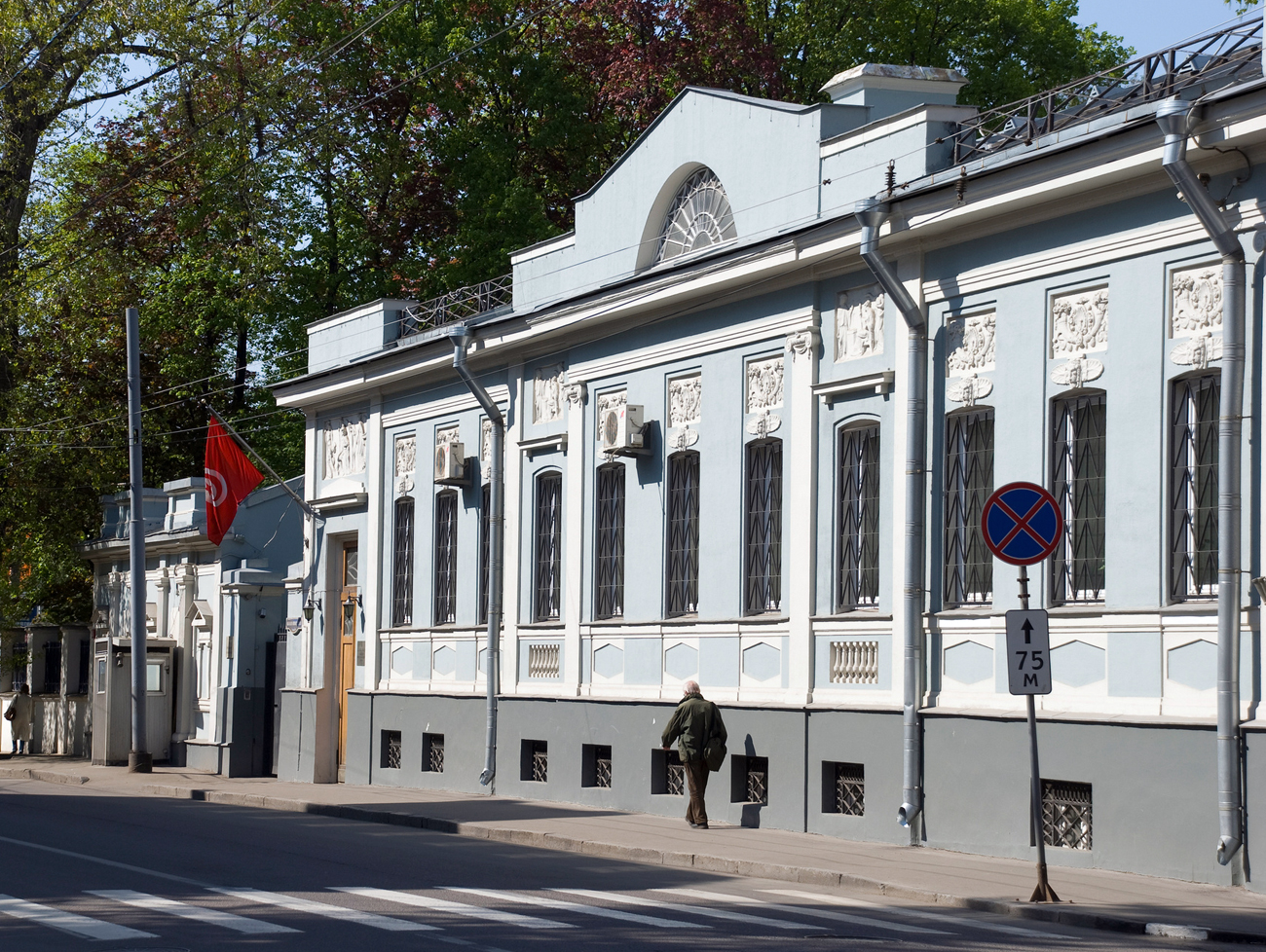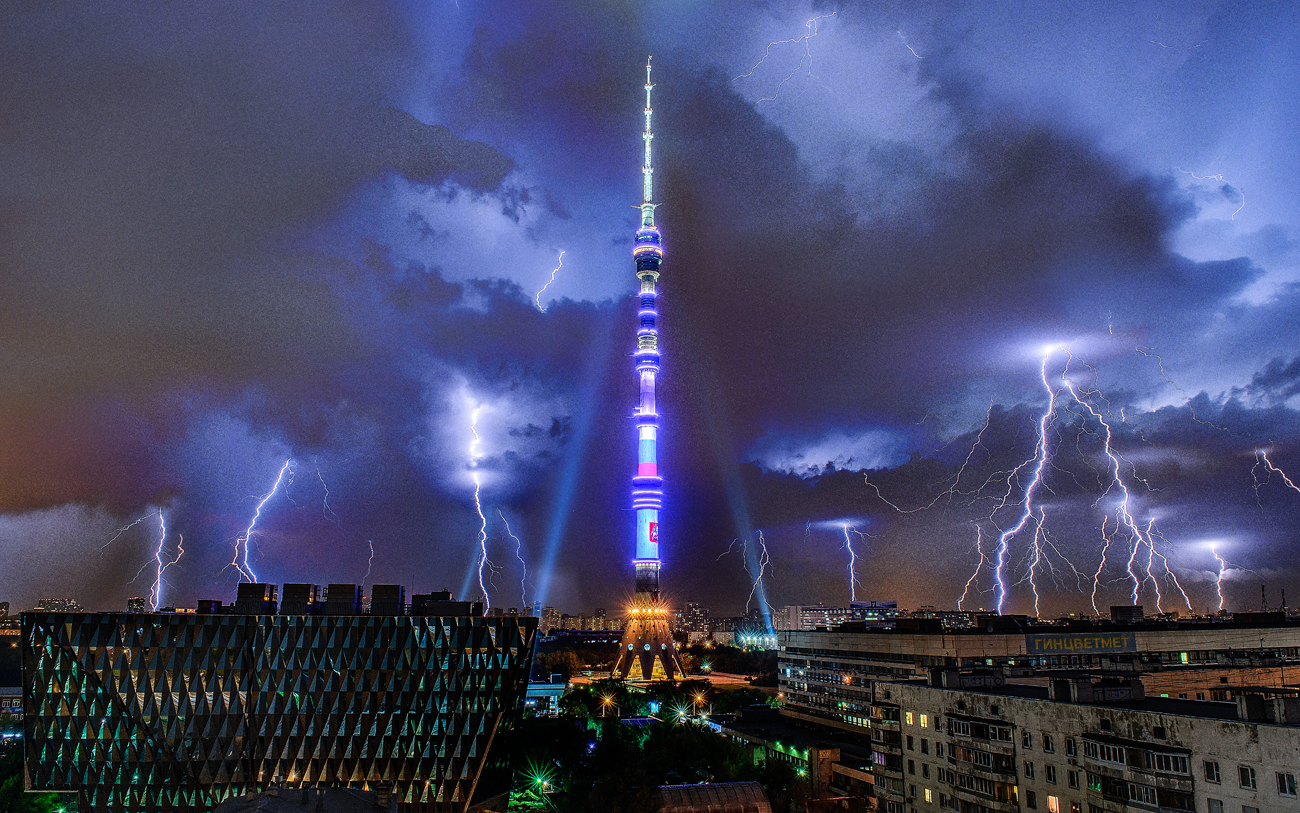
Construction of Fonvizinskaya metro station on the Lyublinsko-Dmitriyevskaya Line in Moscow.
Vitaliy Belousov/RIA NovostiOne of the world's most famous urban legends is about alligators allegedly inhabiting New York City's sewer system. The Russians do not lag behind the Americans in terms of the popular imagination. Some see giant rats in the metro, while others talk about ghosts and the "mutagenic radiation" of the Ostankino television tower.
 That there are classified military and government lines under the capital – the so-called "Metro-2” – is not denied even by some officials. Photo: Construction of Fonvizinskaya metro station on the Lyublinsko-Dmitriyevskaya Line in Moscow. Source: Vitaliy Belousov/RIA Novosti
That there are classified military and government lines under the capital – the so-called "Metro-2” – is not denied even by some officials. Photo: Construction of Fonvizinskaya metro station on the Lyublinsko-Dmitriyevskaya Line in Moscow. Source: Vitaliy Belousov/RIA Novosti
When it comes to rumors about the Moscow subway, truth is closely intertwined with fiction. That there are classified military and government lines under the capital – the so-called "Metro-2” – is not denied even by some officials.
But enthusiasts have been unsuccessfully trying to find more accurate information for years. Is there one line there or an entire system? Or an underground city for 15,000 people? As is typical for an urban legend, there are a thousand versions of it. They are united by an aura of secrecy and danger.
"It was really scary to hear the sound of tarpaulin boots near the alleged entrance to Metro-2," said Konstantin, one of Moscow’s community of “diggers” – enthusiasts who explore subterranean bunkers, wells, tunnels and other facilities. "Is it still guarded by the KGB men, or something?"
Another Moscow resident claims her digger friend was allegedly shot at by special services while searching for Metro-2. Diggers' difficult-to-verify stories about their adventures at the closed facility add to people's curiosity.
"My grandmother told me about Metro-2 in my childhood, and then about mutant rats," recalls Moscow resident Valeria. In the 1990s, tabloids publicized stories about giant rats living in the tunnels.
So could Splinter from "Teenage Mutant Ninja Turtles" find company in the Moscow catacombs? "It's all science: Radiation from rocks must cause mutations in rats," says Pavel, also from Moscow. "But they live in technical rooms, so you can't see them." In fact, of course, a large animal cannot survive in the subway.
Not only the underground bunkers of the Soviet elite are shrouded in legends, but also quite earthly structures, such as the home of the USSR People's Commissar for State Security and Stalin's right-hand man, Lavrenty Beria.
During interrogations in 1953, Beria confessed to abducting and raping dozens of women, but the authenticity of these papers is still being debated (Beria was removed by Khrushchev in a power struggle, and the documents could have been falsified after the execution of his dangerous rival).
But the image of the sadistic Beria was firmly imprinted on the popular mind, and his house in Moscow is surrounded by dark rumors. Allegedly, an invisible car rolls on Malaya Nikitskaya Ulitsa at midnight, with its old motor rumbling. Footsteps are heard, and Beria's ghost comes to his house for violent pleasures: The curious pedestrians will soon hear a woman crying from behind walls.
Skeptics will say that the crying comes from late-working employees of the Tunisian embassy (the commissar's house is now occupied by a diplomatic mission), but this version is much more boring.
 Skeptics say that the crying comes from late-working employees of the Tunisian embassy: the commissar's house is now occupied by a diplomatic mission. Source: Lori/Legion-Media
Skeptics say that the crying comes from late-working employees of the Tunisian embassy: the commissar's house is now occupied by a diplomatic mission. Source: Lori/Legion-Media
It’s not only the city center that has legends. Many people believe that hundreds of Napoleonic soldiers were buried in the hills of Peredelkino, a holiday village in the outskirts of Moscow, in 1812. Paranormal enthusiasts imbue the mounds with mystical qualities, believing that electronics go haywire and travelers disappear there.
In reality, it is likely that there are no mass graves there. "After the difficult war with Napoleon, peasants saw its echoes everywhere, so this is an old myth," researchers of the Museum of Moscow told RBTH. "In the 19th century, archaeologists excavated Slavic mounds from the 10th and 11th centuries. But the inhabitants of the surrounding villages still considered them to be the graves of French soldiers."
The Ostankino neighborhood, where Europe's highest TV tower is located, is also mythologized. It is allegedly haunted by the ghost of an old woman, who was murdered in the 16th century. Now she walks around and predicts disasters.
 The 500-year-old witch is believed to have predicted the high-profile murder of well-known TV journalist Vlad Listyev and a fire at Ostankino in 2000. Photo: A lightning over the Ostankino TV tower in Moscow. Source: Denis Murin/RIA Novosti
The 500-year-old witch is believed to have predicted the high-profile murder of well-known TV journalist Vlad Listyev and a fire at Ostankino in 2000. Photo: A lightning over the Ostankino TV tower in Moscow. Source: Denis Murin/RIA Novosti
The 500-year-old witch is believed to have predicted the high-profile murder of well-known TV journalist Vlad Listyev and a fire at Ostankino in 2000. Sometimes these stories are complemented by vivid details – for example, the furniture in Listyev's office was allegedly gnawed after his death by animals, mutated by the tower's radiation.
There are less bloody rumors: for example, one about a bulldozer embedded by builders in the TV center's building by mistake. Yana Sidorova, the author of a study about the legends of Ostankino, says the TV center's staff does not really believe in these sorts of stories, but is happy to spread them.
All rights reserved by Rossiyskaya Gazeta.
Subscribe
to our newsletter!
Get the week's best stories straight to your inbox